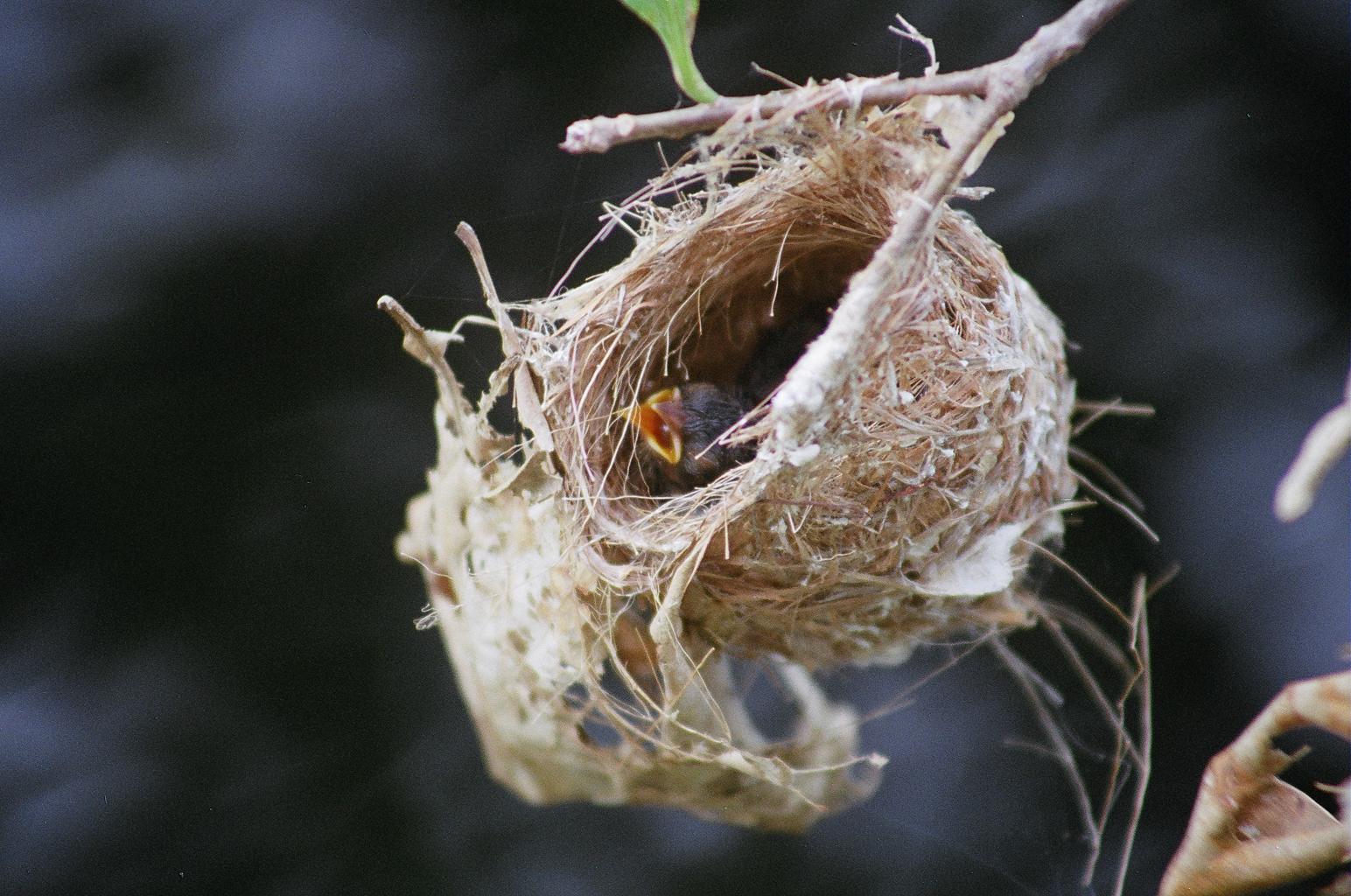
When I first see the little tyke he is standing on a rock in the middle of one of the small pools. He timidly puts one foot into the wet stuff, then slips off the rock into the shallow water and begins splashing. After his bath, he jumps onto the rocks around the pool and shakes his feathers dry. Then he flies to a small shrub. From there he darts out into the air and grabs a small insect, flycatcher fashion. Probably a gnat, for swarms are already out.
Leaving the pool, the dazzling little redstart plays among the shrubbery, picking off early hatched insects. From the shrubbery he flies to a slightly leaf-budding sweet gum tree. Sliding along the sun-splashed limbs, opening and closing his orange fan-shaped tail, the tiny bird dances for his breakfast.
Is he here this morning because he remembers his stop at the pool last fall, found it pleasing and refreshing, and now has it on his itinerary for his northward journey this spring?
Dashing out into the air to grab insects, he is likened to the flycatchers, but here his method of securing insects ceases. He is perpetually in motion, seizing gnats and other gossamer-winged goodies in the air. Flycatchers are more sedentary. They sit on a tree branch or fence and wait patiently for their dinner to fly past. Then they dash out and seize it.
The redstart is one of the commonest of the warblers. It is more abundant in South Carolina in the fall than at any other time of the year.
This vivacious little warbler, flashing orange-red tail and wings, gives us a pleasant surprise late in March when he drops into the pool outside our kitchen window.
Most redstarts spend their winter in the West Indies and Central or South America, some 2,000 miles or more from our area. This is an early date for this little guy to be this far north. Because of his earliness, our place is probably just a pit stop for him and in a few days he will be far up the coast, if he has his eye on New England or Quebec. He is probably on his way back to where he was born.
With the exception of the white lower breast and belly, this tiny 5 1/2 inch warbler is dressed all over in black with bright red-orange accents on wing and tail. It has a habit of drooping its wings, fanning out its tail and jumping into the air after insects. It rarely sits still.
The color pattern is the same for the female, though she is grayish olive-green and pale yellow, where the male is flame color and black. Young resemble the female but young males usually have black on the breast and a light salmon wash on the sides of the breast.
Is he a migrant, or has he spent the winter hidden in thick foliage in swamps and along stream banks? If a migrant, he is an extremely early one that hazarded an early arrival, or he has been well-hidden from bird watchers this past winter.
Some Baltimore orioles opt to spend winters in southern swamps and river bottoms rather than seek refuge in tropical forests. Our little visitor may have chosen to do the same.
We didn't hear his "tsee, tsee, tsee-o" song which might mean he hasn't reached his destination yet. Consequently, he'll continue his journey and wait for the females to arrive before he breaks into sweet song.









